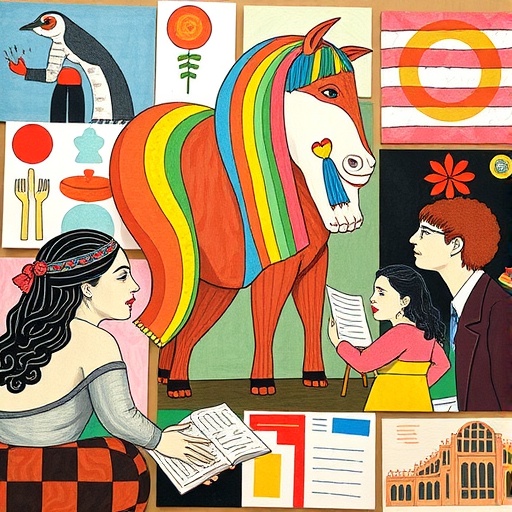In recent years, the intersection of the arts and societal issues has gained increasing prominence, with many experts contending that the arts play a vital role in tackling pressing global challenges. This perspective is championed by researchers like Kai Lehikoinen from the University of the Arts Helsinki, who underscores the importance of socially engaged arts in fostering collaboration and innovation across various fields. Socially engaged arts not only serve as a platform for dialogue but also empower participants to explore complex social dynamics. As modern society grapples with issues such as climate change, poverty, and political polarization, the role of the arts has evolved into a beacon of hope.
Lehikoinen advocates for the integration of artistic practice within higher education institutions, emphasizing the need for collaboration beyond traditional artistic boundaries. The call for cross-sector partnerships highlights the necessity of engaging with social services, environmental initiatives, and educational frameworks. These collaborations are envisioned as catalysts that illuminate often overlooked perspectives, enabling collective problem solving through creative exploration. By convening diverse stakeholders, artists can facilitate discussions that lead to innovative and impactful solutions for communities.
This inter-disciplinary approach is essential when addressing the multifaceted nature of contemporary societal challenges. Lehikoinen insists that creativity and open-mindedness are cornerstones needed for effective trans-professional collaborations. Artists and thinkers must come together to navigate the intricacies of social issues, allowing for new forms of interaction and understanding that can lead to tangible change. In an era marked by division and conflict, the art world can model cooperative efforts that transcend singular disciplines.
Furthermore, Lehikoinen reflects on the necessity for higher arts education programs to promote and adopt socially engaged practices. By doing so, these institutions can counteract the dehumanizing elements of neoliberalism, which prioritizes competition and individualism over collective well-being. Emphasizing that arts can serve as a vehicle for transformation, he points out that a commitment to diversity within social engagements enriches the creative process while strengthening societal bonds. A thriving creative environment recognizes human differences not as impediments but as valuable sources of inspiration that foster deeper connections.
Moreover, Lehikoinen’s work places importance on creating safe spaces for discomfort and dialogue within the context of social activism, which is often accompanied by emotional intensity. He notes that while these emotions can drive individuals toward action, they also have the potential to result in divisive behavior and self-censorship. By establishing environments where alternative viewpoints can engage constructively, communities can better navigate the complexities that arise from emotional challenges. According to education scholar Gert Biesta, the creation of such spaces is essential for enabling an inclusive discourse that accommodates various perspectives.
In today’s environment, where a small segment of the population often holds a disproportionate amount of power, it is critical that civil society engages in collaborative dialogue. Participatory art practices emerge as significant tools that can strengthen this engagement, promoting inclusion and supporting the foundations of democracy. By fostering critical awareness and encouraging diverse voices to contribute, socially engaged arts serve to challenge structural injustices that have historically marginalized many communities. Consequently, these practices not only enrich public discourse but also enhance the democratic process.
The potential of socially engaged arts to bring about meaningful change is significant, but realization of this potential necessitates a concerted effort. Institutions must commit to long-term collaborative initiatives that align with a shared vision for societal transformation. Funding bodies also play a crucial role in this endeavor by providing the necessary resources to support such inclusive and impactful creative collaborations. The urgency of our current moment demands immediate action to harness the transformative power of arts in addressing today’s critical issues.
In conclusion, the conversation surrounding the role of socially engaged arts is crucial to our understanding of contemporary societal dynamics. By viewing art as a tool for fostering dialogue, inclusivity, and community-driven solutions, we can collectively work toward a sustainable future. The intersection of creativity and activism presents a fertile ground for societal advancement. With dedicated efforts and a shared commitment, the arts can empower individuals and communities alike to confront and overcome the pressing challenges of our time.
This examination of socially engaged arts illustrates their potential to reshape our understanding of creativity within society. By embracing diversity, fostering dialogue, and resisting polarization, art can serve as both a mirror and a framework for exploring the complexities of the human experience. Engaging with the arts provides an avenue for collective action that transcends barriers and catalyzes societal progress.
The imperative to act is now clear—socially engaged arts form a critical part of the solutions we seek in confronting the myriad challenges faced by our communities. As we look to the future, the integration of creativity into social discourse remains paramount in our shared pursuit of a more equitable and sustainable world.
Subject of Research: People
Article Title: The Transformative Power of Socially Engaged Arts in Addressing Global Challenges
News Publication Date: October 2023
Web References: N/A
References: N/A
Image Credits: N/A
Keywords
Socially engaged arts, creativity, collaboration, societal challenges, higher education, diversity, democracy, environmental initiatives, public discourse, activism




